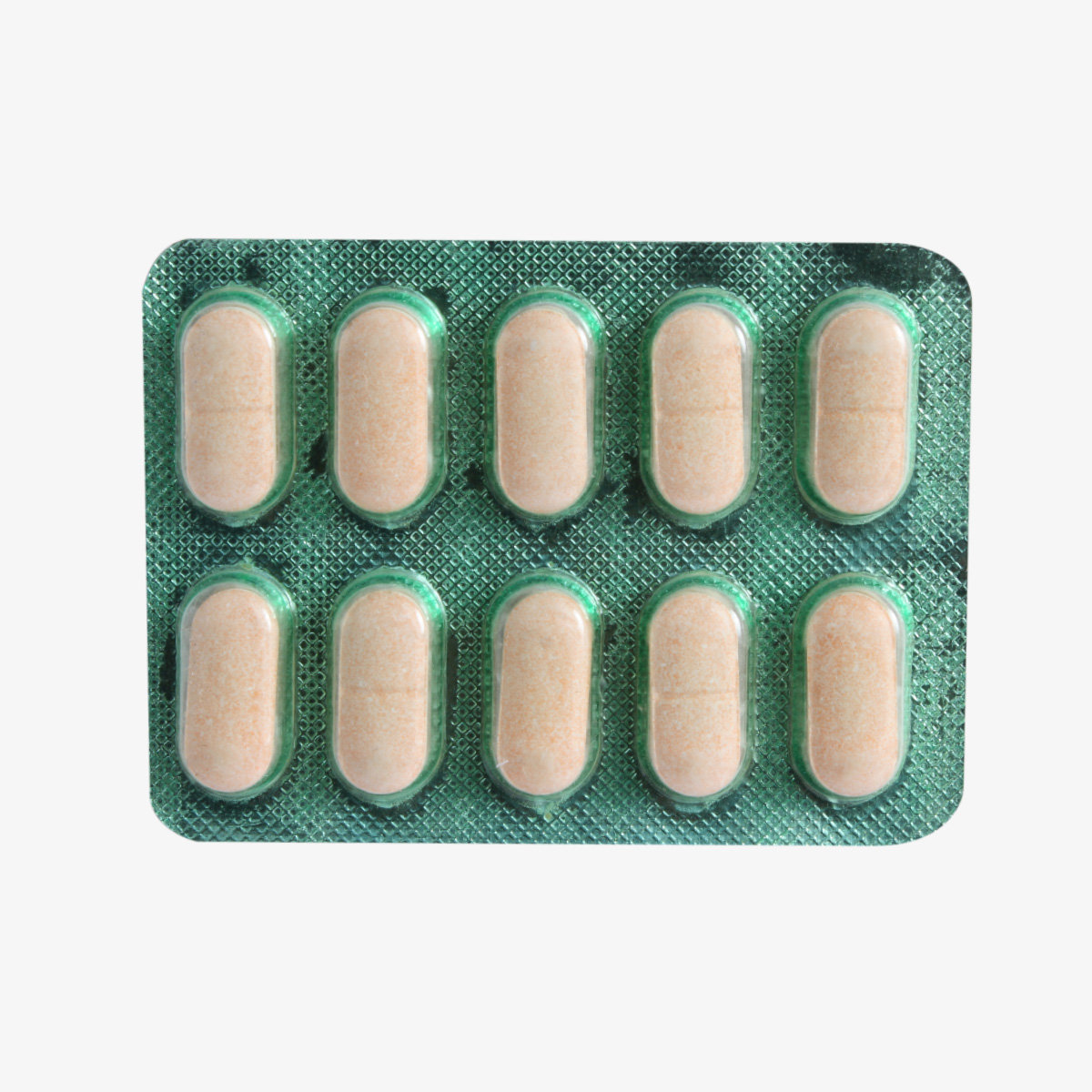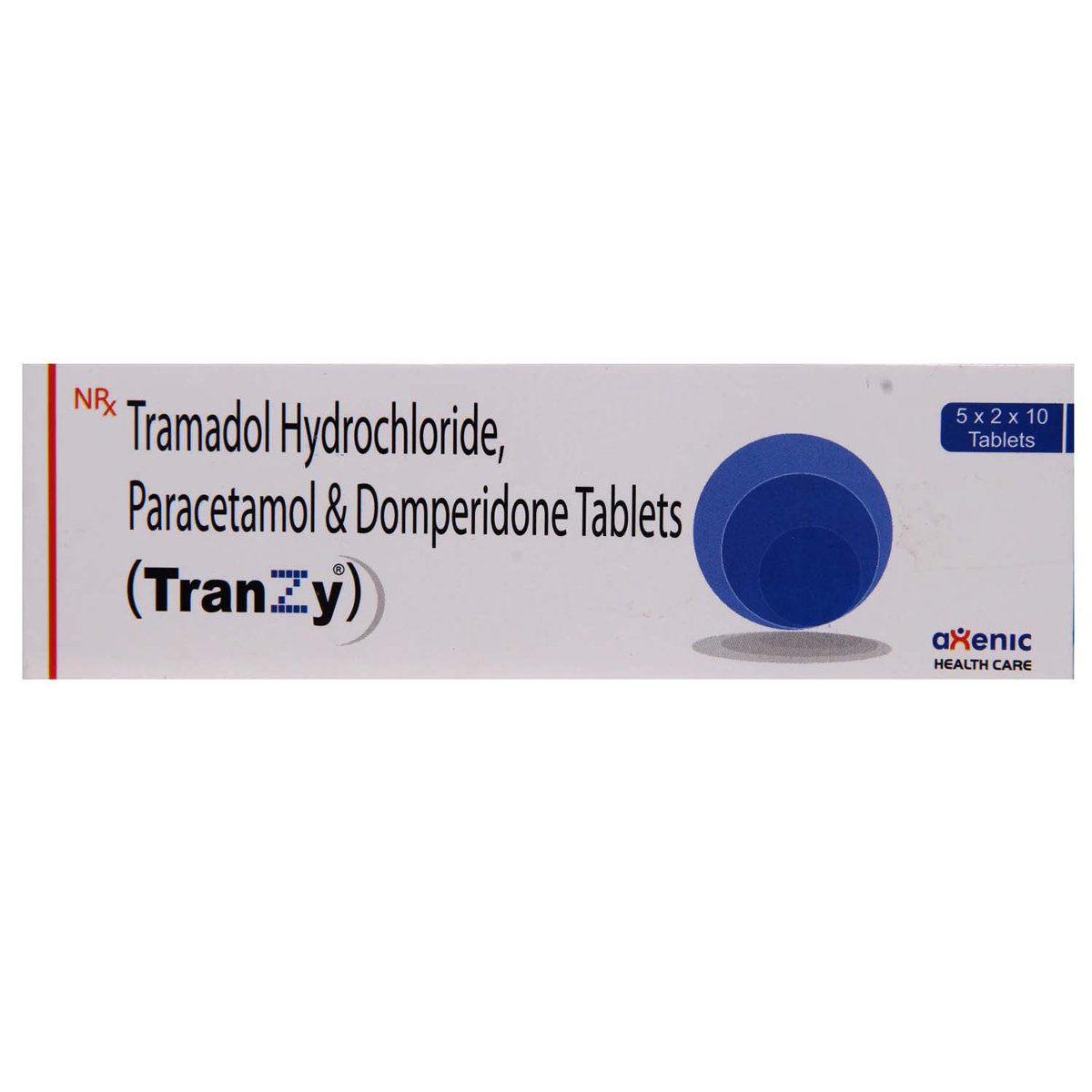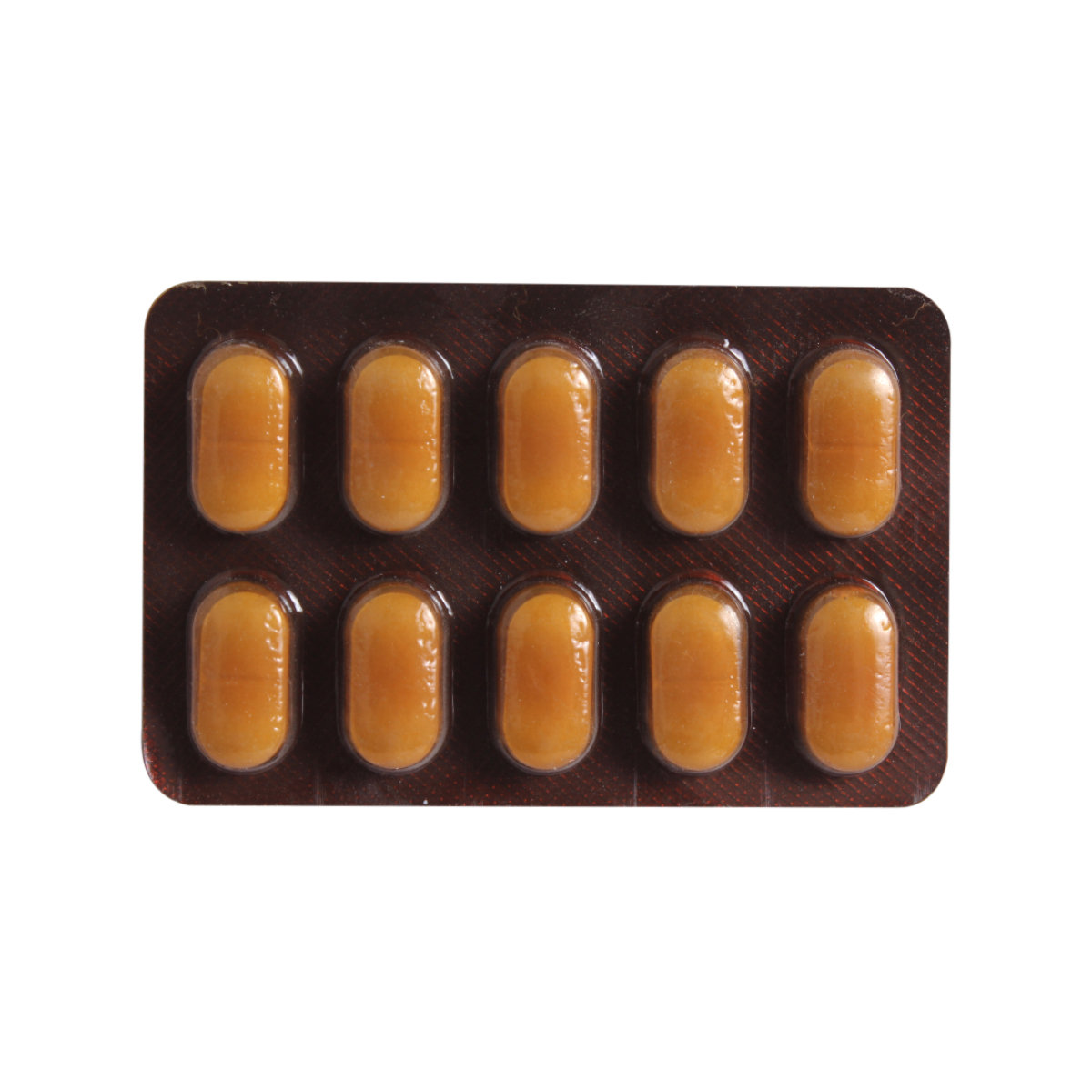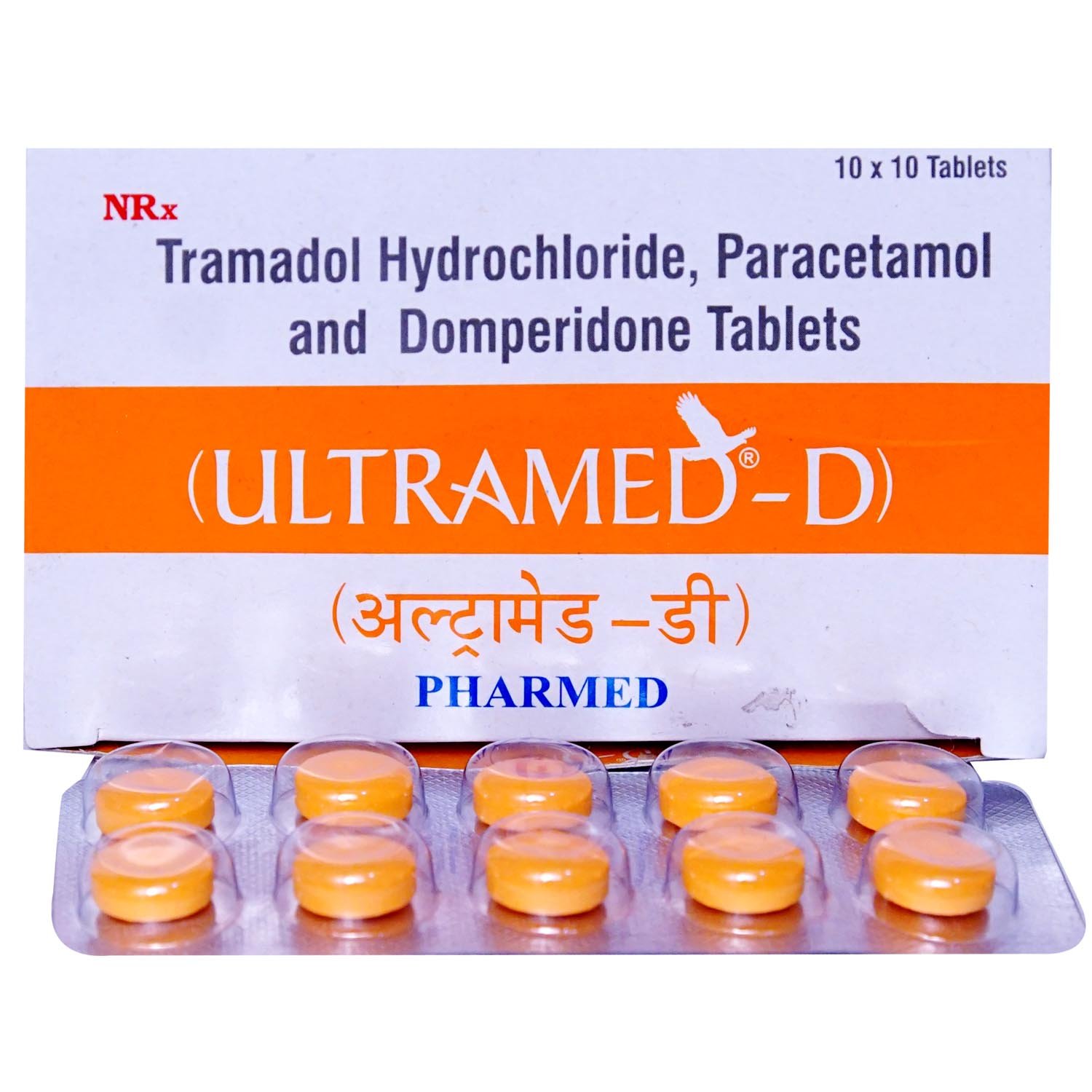Ultramed-D Tablet 15's
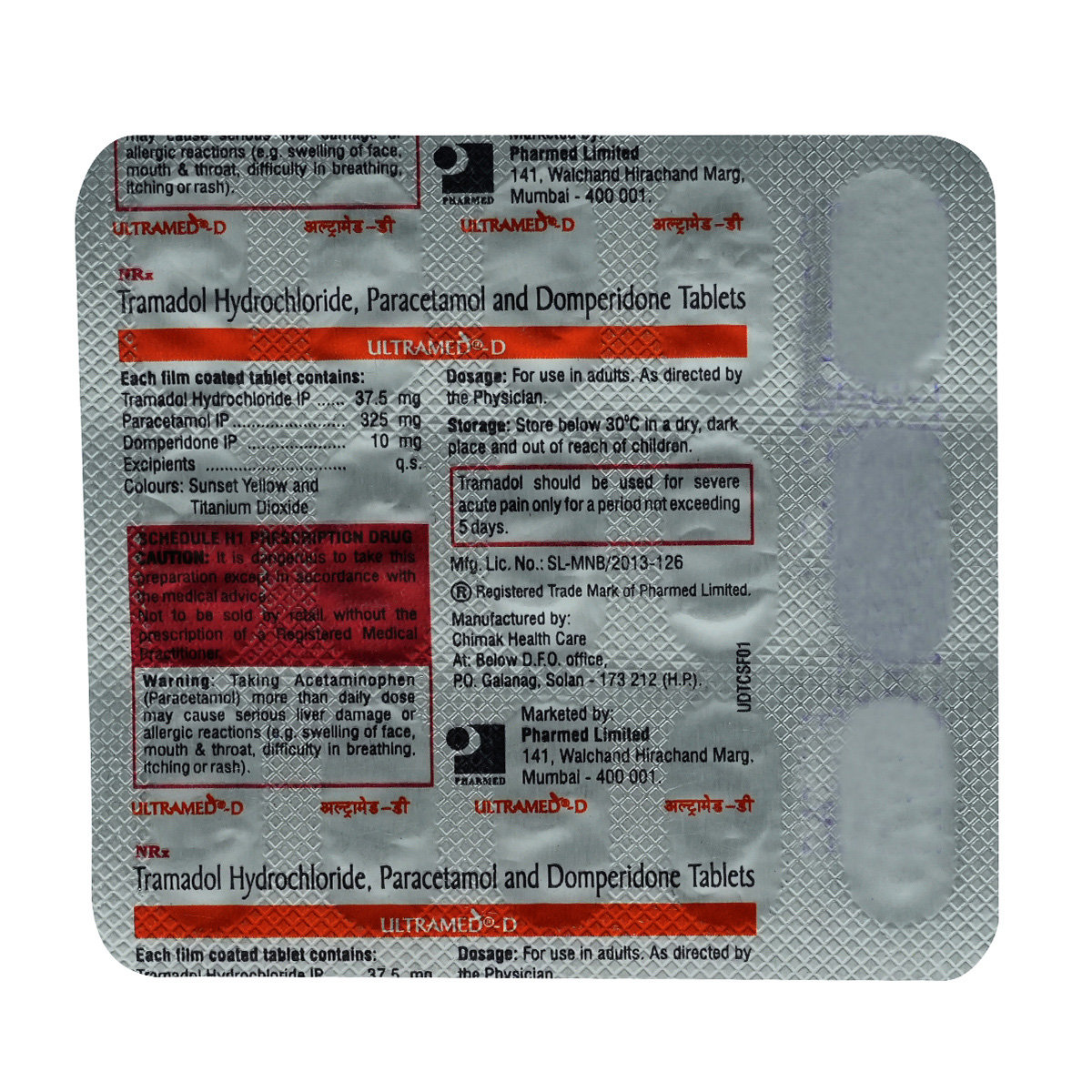
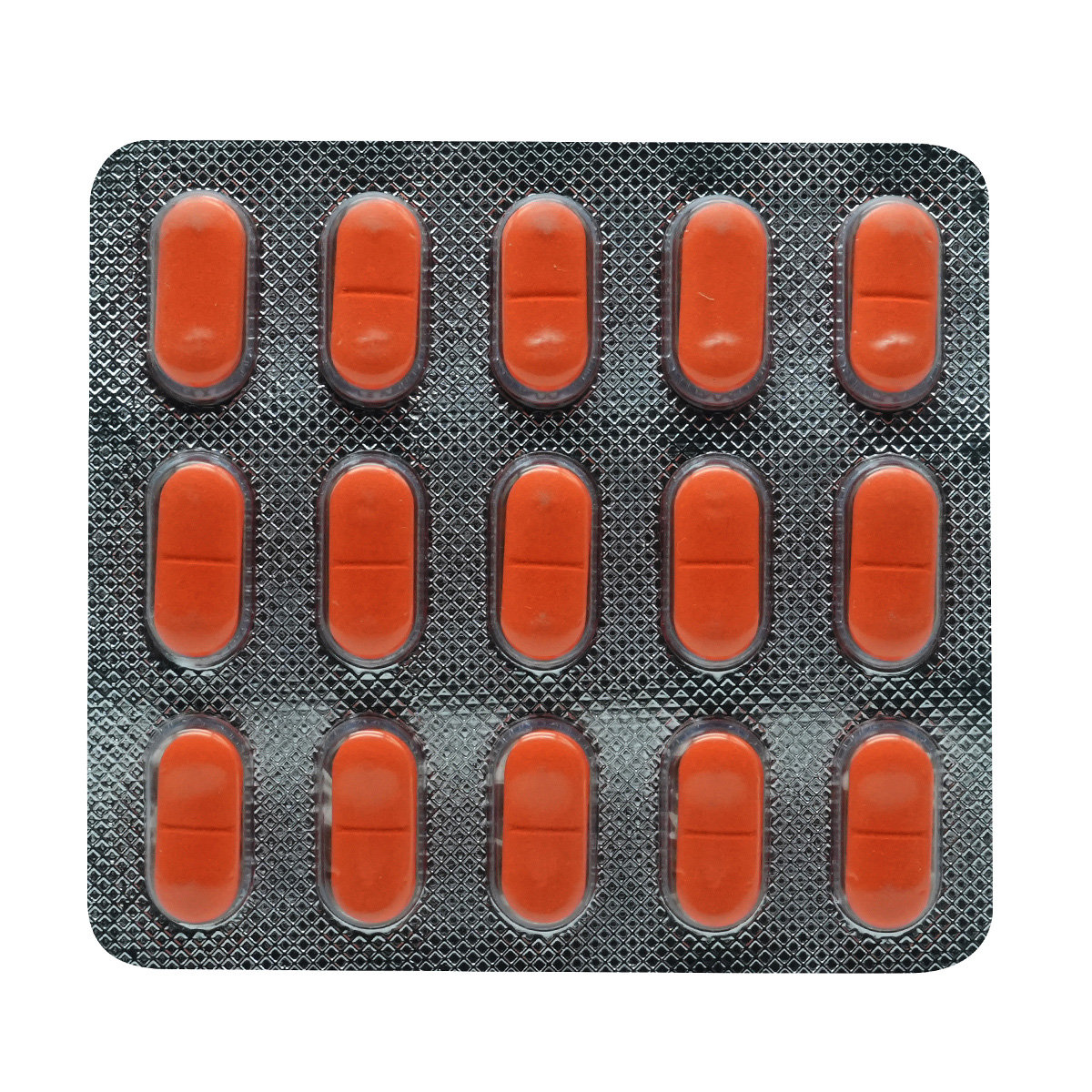
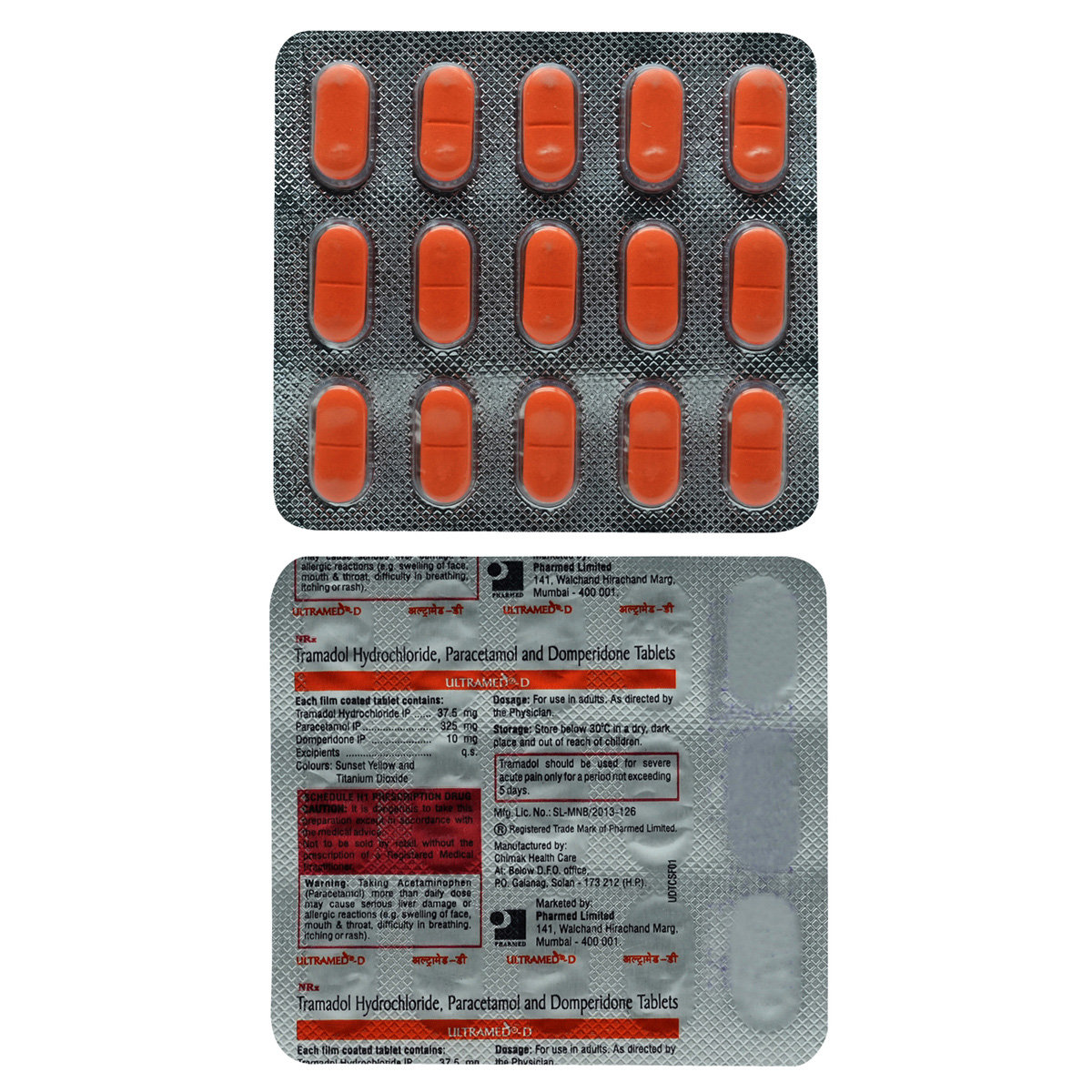



MRP ₹236
(Inclusive of all Taxes)
₹35.4 Cashback (15%)
Selected Pack Size:15
15 ₹212.4
(₹14.16 per unit)
Out of stock
10 ₹207
(₹20.7 per unit)
Out of stock
Provide Delivery Location
Online payment accepted
 Prescription drug
Prescription drugWhats That
Composition :
Manufacturer/Marketer :
Consume Type :
Expires on or after :
Return Policy :
About Ultramed-D Tablet
Ultramed-D Tablet belongs to the class of analgesics and is used in the symptomatic treatment of moderate to severe pain. Pain can be temporary (acute) or long-lasting (chronic). Acute pain is, for a short time, caused by damage to the tissues of the muscle, bone, or other organs. While chronic pain lasts for a long duration and is caused due to pathologies like nerve damage, osteoarthritis, and migraine.
Ultramed-D Tablet contains Tramadol, Paracetamol, and Domperidone. Tramadol is an opioid analgesic (pain reliever) that blocks the transmission of pain signals to the brain to lower pain perception. Paracetamol is an analgesic (pain reliever) and an antipyretic (fever reducer) that works by blocking the release of certain chemical messengers that cause fever and pain. Domperidone is an antiemetic that works on the region in the brain that controls vomiting. It also increases the movement of the stomach and intestines, allowing food to move more easily through the stomach.
Ultramed-D Tablet can be taken as advised by your doctor. Ultramed-D Tablet can be taken with food or after food. Swallow it as a whole with a glass of water. Do not crush or break the Ultramed-D Tablet . People taking Ultramed-D Tablet may experience common side effects like sleepiness, weakness, dizziness, nausea, vomiting, diarrhoea, or constipation. However, all patients may not develop the same side effects. Inform your doctor if you experience any symptoms like chest tightness, breathing difficulties, fever, skin rashes, or increased heart rate. If these side effects persist, stop taking Ultramed-D Tablet and consult your doctor immediately.
Before taking Ultramed-D Tablet , inform your doctor if you are allergic to it. Inform your doctor if you are taking medicines other than the Ultramed-D Tablet . Inform your doctor if you are a pregnant/breastfeeding woman. Inform your doctor if you have heart, kidney, and liver disease. Prolonged intake of Ultramed-D Tablet may be associated with an increased risk of heart rhythm disorder (arrhythmia), cardiac arrest (heart attack), and bleeding disorders.
Uses of Ultramed-D Tablet
Directions for Use
Key Benefits
Ultramed-D Tablet contains Tramadol, Paracetamol, and Domperidone belong to the class of analgesics and is used in the symptomatic treatment of moderate to severe pain. Tramadol is an opioid analgesic (pain reliever) that blocks the transmission of pain signals to the brain to lower pain perception. Paracetamol is an analgesic (pain reliever) and an antipyretic (fever reducer) that works by blocking the release of certain chemical messengers that cause fever and pain. Domperidone is an antiemetic that works on the region in the brain that controls vomiting. It also increases the movement of the stomach and intestines, allowing food to move more easily through the stomach.
Storage
- Inform your doctor about your constipation symptoms. They may adjust your medication or advise alternative treatments.
- Stay hydrated by drinking sufficient of water (at least 8-10 glasses a day) to help soften stool and promote bowel movements.
- Increase fibre intake by eating foods high in fibre, such as fruits, whole grains, vegetables and legumes, to help bulk up the stool.
- Establish a bowel routine by trying to go to the bathroom at the same time each day to train your bowels.
- Engaging in regular exercise, like walking or yoga, can support in bowel movement stimulation.
- Consult your doctor if constipation persists, and discuss alternative treatments or adjustments to your medication.
- Preventing Vomiting (Before it Happens)
- Take medication exactly as prescribed by your doctor. This can help minimize side effects, including vomiting.
- Having a small meal before taking your medication can help reduce nausea and vomiting.
- Talk to your doctor about taking anti-nausea medication along with your prescribed medication.
- Managing Vomiting (If it Happens)
- Try taking ginger in the form of tea, ale, or candy to help alleviate nausea and vomiting.
- What to Do if Vomiting Persists
- Consult your doctor if vomiting continues or worsens, consult the doctor for guidance on adjusting your medication or additional treatment.
- Take medications with food (if recommended): It can help prevent stomach distress and indigestion.
- Eat smaller, more frequent meals: Divide daily food intake into smaller, more frequent meals to ease digestion.
- Avoid trigger foods: Identify and avoid foods that trigger indigestion, such as spicy, fatty, or acidic foods.
- Stay upright after eating: Sit or stand upright for at least 1-2 hours after eating to prevent stomach acid from flowing into the oesophagus.
- Avoid carbonated drinks: Avoid drinking carbonated beverages, such as soda or beer, which can worsen indigestion.
- Manage stress: To alleviate indigestion, engage in stress-reducing activities like deep breathing exercises or meditation.
- Consult a doctor if needed: If indigestion worsens or persists, consult a healthcare professional to adjust the medication regimen or explore alternative treatments.
- Skin rash caused by allergies is due to irritants or allergens. Therefore, avoid contact with such irritants.
- Consult your doctor for proper medication and apply an anti-itch medication. Follow the schedule and use the medication whenever needed.
- Protect your skin from extreme heat and try to apply wet compresses.
- Soak in the cool bath, which gives a soothing impact to the affected area.
- Tell your doctor immediately if you experience shortness of breath after taking medication.
- Your doctor may adjust the medication regimen or dosage or give alternative medical procedures to minimize the symptoms of shortness of breath.
- Monitor your oxygen levels and breathing rate regularly to track changes and potential side effects.
- For controlling stress and anxiety, try relaxation techniques like deep breathing exercises, meditation, or yoga.
- Make lifestyle changes, such as quitting smoking, exercising regularly, and maintaining a healthy weight.
- Seek emergency medical attention if you experience severe shortness of breath, chest pain, or difficulty speaking.
- Follow up regularly with your doctor to monitor progress, adjust treatment plans, and address any concerns or questions.
- Talk to your doctor about oral potassium supplements.
- Eat potassium rich foods such as bananas, avocados, oranges, dark leafy greens, beans and peas, fish, spinach, milk and tomatoes.
- Inform your doctor about dry mouth symptoms. They may adjust your medication regimen or prescribe additional medications to manage symptoms.
- Drink plenty of water throughout the day to help keep your mouth moist and alleviate dry mouth symptoms.
- Chew sugar-free gum or candies to increase saliva production and keep your mouth moisturized.
- Use saliva substitutes, such as mouthwashes or sprays, only if your doctor advises them to help moisturize your mouth and alleviate dry mouth symptoms.
- Avoid consuming smoking, alcohol, spicy or acidic foods, and other irritants that may aggravate dry mouth symptoms.
- Schedule regular dental check-ups to keep track of your oral health and handle any dry mouth issues as they arise.
Drug Warnings
Inform your doctor if you have known allergies to tramadol, paracetamol or any other active ingredients present in Ultramed-D Tablet . Talk to your doctor before taking Ultramed-D Tablet if you are taking other medicines containing paracetamol or tramadol, using other analgesics, have liver disease, have kidney problems, have asthma or severe lung problems, have central nervous system disorders such as epilepsy or seizures, have alcohol dependence or have any drug dependence.
Drug-Drug Interactions
Drug-Drug Interactions
Login/Sign Up
Taking rasagiline with Ultramed-D Tablet can increase the risk of serotonin syndrome (A condition in which a chemical called serotonin increase in your body).
How to manage the interaction:
Taking Ultramed-D Tablet with Rasagiline is not recommended, as it can lead to an interaction, but can be taken if advised by your doctor. However, if you experience any symptoms like severe headache, blurred vision, confusion, seizures, chest pain, nausea or vomiting, sudden numbness or weakness (especially on one side of the body), speech difficulties, fever, sweating, lightheadedness, and fainting, contact your doctor immediately. Do not discontinue any medications without first consulting your doctor.
Combining Tranylcypromine with Ultramed-D Tablet can increase the risk of serotonin syndrome (a condition in which a chemical called serotonin increase in your body).
How to manage the interaction:
Taking Tranylcypromine with Ultramed-D Tablet is not recommended, but can be taken together if prescribed by a doctor. However, consult a doctor if you experience confusion, hallucination(seeing and hearing things that do not exist), fits, blood pressure alteration, increased heart rate, fever, excessive sweating, shivering or shaking, blurred vision, pain in the muscles or stiffness, incoordination, stomach cramps, nausea, vomiting, and diarrhea. Do not discontinue any medications without consulting your doctor.
Taking Safinamide with Ultramed-D Tablet can increase the risk of serotonin syndrome (A condition in which a chemical called serotonin increase in your body).
How to manage the interaction:
Taking Safinamide with Ultramed-D Tablet is not recommended as it can possibly result in an interaction, but can be taken together if prescribed by a doctor. However, consult a doctor if you experience confusion, hallucination(seeing and hearing things that do not exist), fits, blood pressure alteration, increased heart rate, fever, excessive sweating, shivering or shaking, blurred vision, pain in the muscles or stiffness, incoordination, stomach cramps, nausea, vomiting, and loose stools. Do not discontinue any medications without consulting your doctor.
Combining Phenelzine with Ultramed-D Tablet can increase the risk of serotonin syndrome and seizures.
How to manage the interaction:
Taking Ultramed-D Tablet with Phenelzine is not recommended, please consult your doctor before taking it.
Co-administration of Linezolid with Ultramed-D Tablet can increase the risk of serotonin syndrome and seizures.
How to manage the interaction:
Taking Linezolid with Ultramed-D Tablet is not recommended, consult a doctor before taking it. Consult a doctor if you experience confusion, hallucination, seizure, extreme changes in blood pressure, increased heart rate, fever, excessive sweating, shivering or shaking, blurred vision, muscle spasm or stiffness, tremor, incoordination, stomach cramp, nausea, vomiting, and diarrhea. Do not stop using any medications without talking to a doctor.
Co-administration of Ultramed-D Tablet with Alvimopan can make the side effects worse or more dangerous.
How to manage the interaction:
Taking Alvimopan with Ultramed-D Tablet is not recommended, please consult your doctor before taking it.
Co-administration of Ziprasidone with Ultramed-D Tablet can increase the risk of irregular heart rhythm.
How to manage the interaction:
Taking Ultramed-D Tablet with Ziprasidone together can possibly result in an interaction, but it can be taken if a doctor has advised it. However, consult a doctor immediately if you experience sudden dizziness, lightheadedness, fainting, shortness of breath, or heart palpitations. Do not discontinue any medications without consulting a doctor.
Co-administration of Domeperidone and Bepridil can increase the risk of irregular heart rhythm.
How to manage the interaction:
Although taking Ultramed-D Tablet and Bepridil together can cause an interaction, it can be taken if your doctor has suggested it. If you experience lightheadedness, tiredness, increased heart rate, consult a doctor. Do not discontinue any medications without consulting a doctor.
Combining Mizolastine with Ultramed-D Tablet can increase the risk or severity of irregular heart rhythms.
How to manage the interaction:
Although taking Ultramed-D Tablet and Mizolastine together can cause an interaction, it can be taken if your doctor has suggested it. However, if you experience sudden dizziness, lightheadedness, fainting, shortness of breath, chest pain or tightness, rapid heartbeat, contact a doctor immediately. Do not discontinue any medications without consulting a doctor.
Coadministration of Ultramed-D Tablet with Cisapride can increase the blood levels of Ultramed-D Tablet.
How to manage the interaction:
There may be a possibility of interaction between Ultramed-D Tablet and Cisapride, but it can be taken if prescribed by a doctor. In case you experience any side effects like swelling of the ankles or feet, unusual tiredness, redness, changes in menstrual ability, contact a doctor. It is recommended to do this to ensure your heart stays healthy. Do not stop using any medications without talking to a doctor.
Drug-Food Interactions
Drug-Food Interactions
Login/Sign Up
Diet & Lifestyle Advise
-
Do not take alcohol.
-
Take adequate rest whenever required.
-
Avoid driving or operating heavy machinery
-
Eat a healthy diet and a low-fat diet, especially in small portions, as it will be easy for digestion. Avoid eating over-sweet food and include more salty food, especially if you have been vomiting.
-
Also, if you like vomiting at a specific time, avoid eating your favourite food at that particular time, as your taste for that food may get turned off.
-
Include more cool beverages in your food, like clear soup, flavoured gelatin, and carbonated beverages. Also, when you drink with a stray, sip slowly to avoid swallowing air that may lead to gas and acidity.
Side Effects of Ultramed-D Tablet
- Nausea
- Vomiting
- Constipation
- Dryness in mouth
- Sleepiness
- Weakness
- Dizziness
Habit Forming
Therapeutic Class
All Substitutes & Brand Comparisons
RX
Out of StockNot for online saleSympara-TD Tablet 10's
Symbio Life Pharmaceuticals
₹72
(₹6.48 per unit)
54% CHEAPERRX
Out of StockNot for online saleTRAM PD TABLET
Alchemist Life Sciences Ltd
₹76
(₹6.84 per unit)
51% CHEAPERRX
Not for online saleTramasure-Plus Nf Tablet 10's
Mankind Pharma Pvt Ltd
₹79
(₹7.11 per unit)
49% CHEAPER
Product Substitutes
Drug-Diseases Interactions
Drug-Diseases Interactions
Login/Sign Up
FAQs
It is best to avoid alcohol while taking Ultramed-D Tablet as it can damage your liver.
Yes, Ultramed-D Tablet can cause dry mouth. If you feel excessively thirsty, please increase your fluid intake and do frequent mouth rinses.
Your doctor decides the dose and duration of the medicine depending on your health condition. It is generally not used for more than 5 days as prolonged usage may lead to dependence.
Ultramed-D Tablet contains tramadol, paracetamol, and domperidone. Tramadol is an opioid analgesic (pain reliever) that works by blocking the transmission of pain signals to the brain to lower pain perception. Paracetamol is an analgesic (pain reliever) and an antipyretic (fever reducer) that works by blocking the release of certain chemical messengers that cause fever and pain. Domperidone is an antiemetic that works on the region in the brain that controls vomiting. It also increases the movement of the stomach and intestines, allowing food to move more easily through the stomach.
People taking Ultramed-D Tablet may experience common side effects like sleepiness, weakness, dizziness, nausea, vomiting, diarrhea, or constipation. However, all patients may not develop the same side effects. Inform your doctor if you experience any symptoms like chest tightness, breathing difficulties, fever, skin rashes, or increased heart rate. If these side effects persist, stop taking Ultramed-D Tablet and consult your doctor immediately.
Drug-Drug Interactions Checker List
- CARBAMAZEPINE
- ONDANSETRON
- WARFARIN
- RASAGILINE
- ALCOHOL
- PHENOTHIAZINE
- METOCLOPRAMIDE
- CHOLESTYRAMINE
- QUINIDINE
- ERYTHROMYCIN
- FLUOXETINE
Special Advise
Do not stop using Ultramed-D Tablet without a doctor’s advice. Sudden stopping may cause withdrawal symptoms such as nervousness, mood disturbances, hallucinations, suicidal thoughts, muscle aches, diarrhoea, and nausea.
Disease/Condition Glossary
Pain: Pain is an unpleasant feeling or discomfort that occurs when the nervous system is targeted. People may experience moderate to severe pain due to various conditions such as osteoarthritis, migraine, surgery, or other chronic conditions.
Migraine: A headache of varying intensity, often accompanied by nausea and sensitivity to light and sound. Symptoms include pain on one side of your head, but often on both sides, pain that throbs or pulses, sensitivity to light, sound, and sometimes smell and touch, nausea, and vomiting.
Osteoarthritis: “Osteoarthritis is a disease characterized by cartilage degeneration and its underlying bone within a joint and bony overgrowth. The breakdown of these tissues eventually leads to pain and joint stiffness. The joints most commonly affected are the knees, hips, and those in the hands and spine.

Have a query?
Buy best C.n.s Drugs products by
Intas Pharmaceuticals Ltd
Sun Pharmaceutical Industries Ltd
Torrent Pharmaceuticals Ltd
Alkem Laboratories Ltd
Abbott India Ltd
Cipla Ltd
Alteus Biogenics Pvt Ltd
Micro Labs Ltd
Lupin Ltd
Ipca Laboratories Ltd
D D Pharmaceuticals Pvt Ltd
Icon Life Sciences
Mankind Pharma Pvt Ltd
Tripada Healthcare Pvt Ltd
Arinna Lifesciences Ltd
Linux Laboratories Pvt Ltd
East West Pharma India Pvt Ltd
La Renon Healthcare Pvt Ltd
Talent India Pvt Ltd
Tas Med India Pvt Ltd
Zydus Healthcare Ltd
Cnx Health Care Pvt Ltd
Eris Life Sciences Ltd
Leeford Healthcare Ltd
Emcure Pharmaceuticals Ltd
Macleods Pharmaceuticals Ltd
Sigmund Promedica
Aristo Pharmaceuticals Pvt Ltd
Dr Reddy's Laboratories Ltd
Troikaa Pharmaceuticals Ltd
Consern Pharma Ltd
Zydus Cadila
Shine Pharmaceuticals Ltd
Wockhardt Ltd
Ardent Life Sciences Pvt Ltd
Crescent Formulations Pvt Ltd
Theo Pharma Pvt Ltd
Reliance Formulation Pvt Ltd
Ikon Pharmaceuticals Pvt Ltd
Propel Healthcare
Neon Laboratories Ltd
Jagsam Pharma
Msn Laboratories Pvt Ltd
Morepen Laboratories Ltd
Pulse Pharmaceuticals
Sanofi India Ltd
Med Manor Organics Pvt Ltd
Hetero Healthcare Pvt Ltd
Novartis India Ltd
Crescent Therapeutics Ltd
Elder Pharmaceuticals Ltd
Solvate Laboratories Pvt Ltd
Akumentis Healthcare Ltd
Mova Pharmaceutical Pvt Ltd
Psyco Remedies Ltd
Tripada Lifecare Pvt Ltd
Ajanta Pharma Ltd
Cyrus Remedies Pvt Ltd
Medishri Healthcare Pvt Ltd
Cadila Healthcare Ltd
Glenmark Pharmaceuticals Ltd
Matteo Health Care Pvt Ltd
Hbc Life Sciences Pvt Ltd
Lyf Healthcare
Matias Healthcare Pvt Ltd
Mesmer Pharmaceuticals
Alembic Pharmaceuticals Ltd
Capital Pharma
Crescent Pharmaceuticals
Medopharm Pvt Ltd
Alniche Life Sciences Pvt Ltd
Kivi Labs Ltd
Talin Remedies Pvt Ltd
USV Pvt Ltd
Quince Lifesciences Pvt Ltd
Solis Pharmaceuticals
Infivis Life Care
Zuventus Healthcare Ltd
Cadila Pharmaceuticals Ltd
Pfizer Ltd
Wallace Pharmaceuticals Pvt Ltd
A N Pharmacia Laboratories Pvt Ltd
Blue Cross Laboratories Pvt Ltd
Jenburkt Pharmaceuticals Ltd
Lia Life Sciences Pvt Ltd
Mano Pharma
Medley Pharmaceuticals Ltd
Primus Remedies Pvt Ltd
FDC Ltd
Maneesh Pharmaceuticals Ltd
Apex Laboratories Pvt Ltd
Gagnant Healthcare Pvt Ltd
Ozone Pharmaceuticals Ltd
RPG Life Sciences Ltd
Strides Shasun Ltd
Unichem International
GlaxoSmithKline Pharmaceuticals Ltd
Kuresys Labs Pvt Ltd
LA Pharma
Trion Pharma India Llp
Alcohol
Safe if prescribed
Alcohol should not be consumed while using Ultramed-D Tablet as it may cause serious side effects.
Pregnancy
Consult your doctor
Ultramed-D Tablet is not recommended for use in pregnant women. If you are pregnant, consult your doctor before taking Ultramed-D Tablet .
Breast Feeding
Consult your doctor
Ultramed-D Tablet is not used in breastfeeding mothers as it may get excreted in the breast milk. However, if given, breastfeeding mothers are advised to refrain from breastfeeding while taking Ultramed-D Tablet .
Driving
Safe if prescribed
Ultramed-D Tablet may cause dizziness. Therefore, it is advised not to drive when taking Ultramed-D Tablet .
Liver
Consult your doctor
Ultramed-D Tablet should be used with caution in patients with liver diseases. Therefore, the doctor may adjust the dose while using it in patients with liver diseases.
Kidney
Consult your doctor
Patients with renal impairment may require dose adjustments of Ultramed-D Tablet .
Children
Safe if prescribed
Ultramed-D Tablet is not recommended for use in children. Inform your doctor before taking Ultramed-D Tablet .




